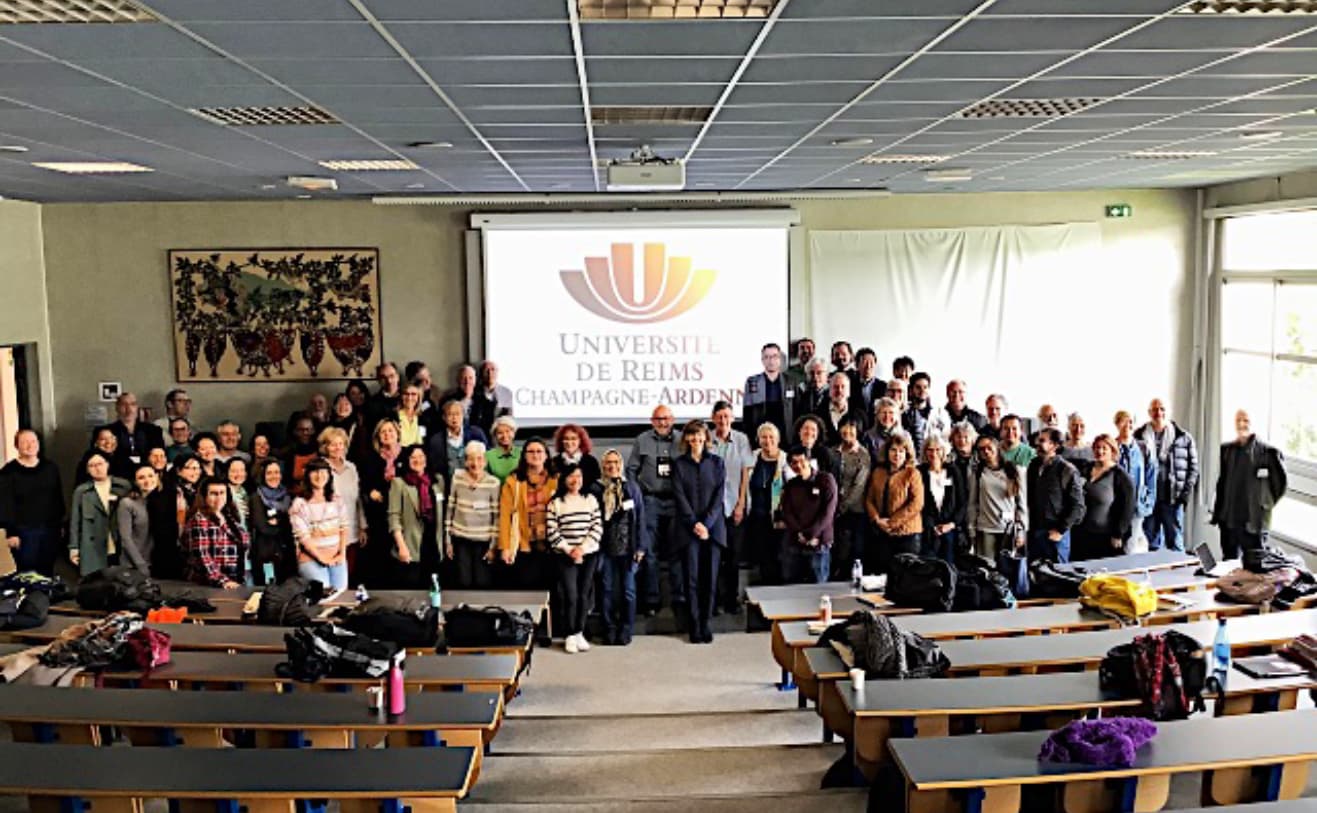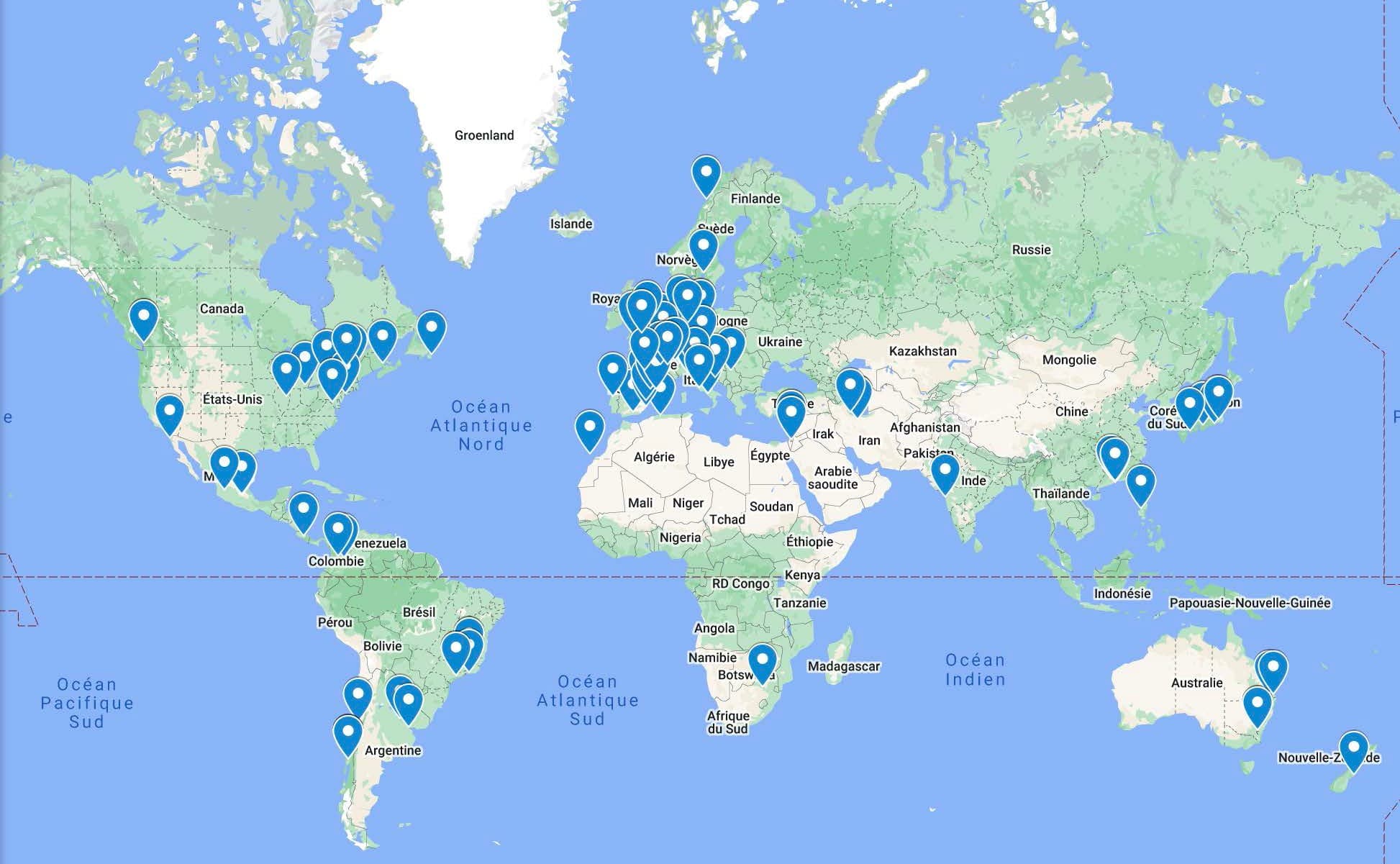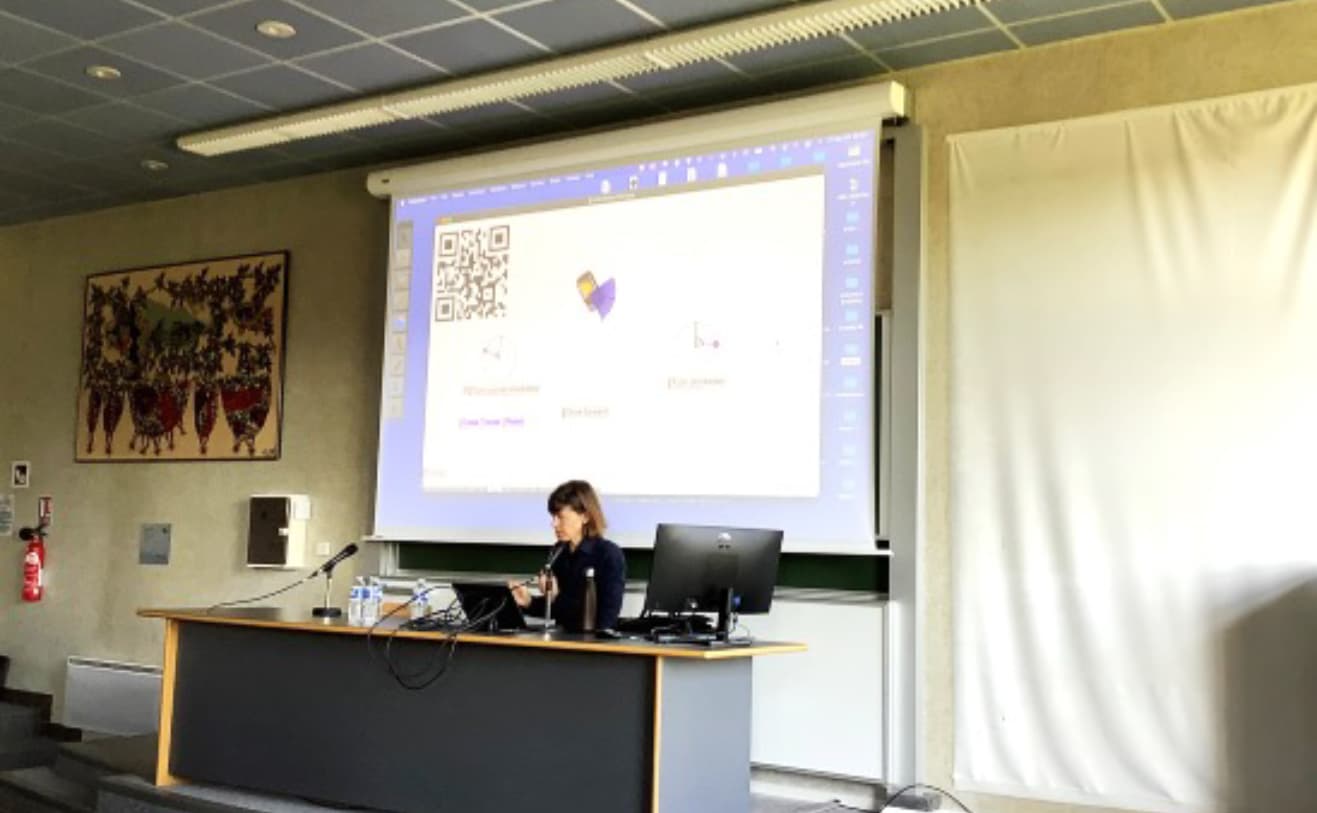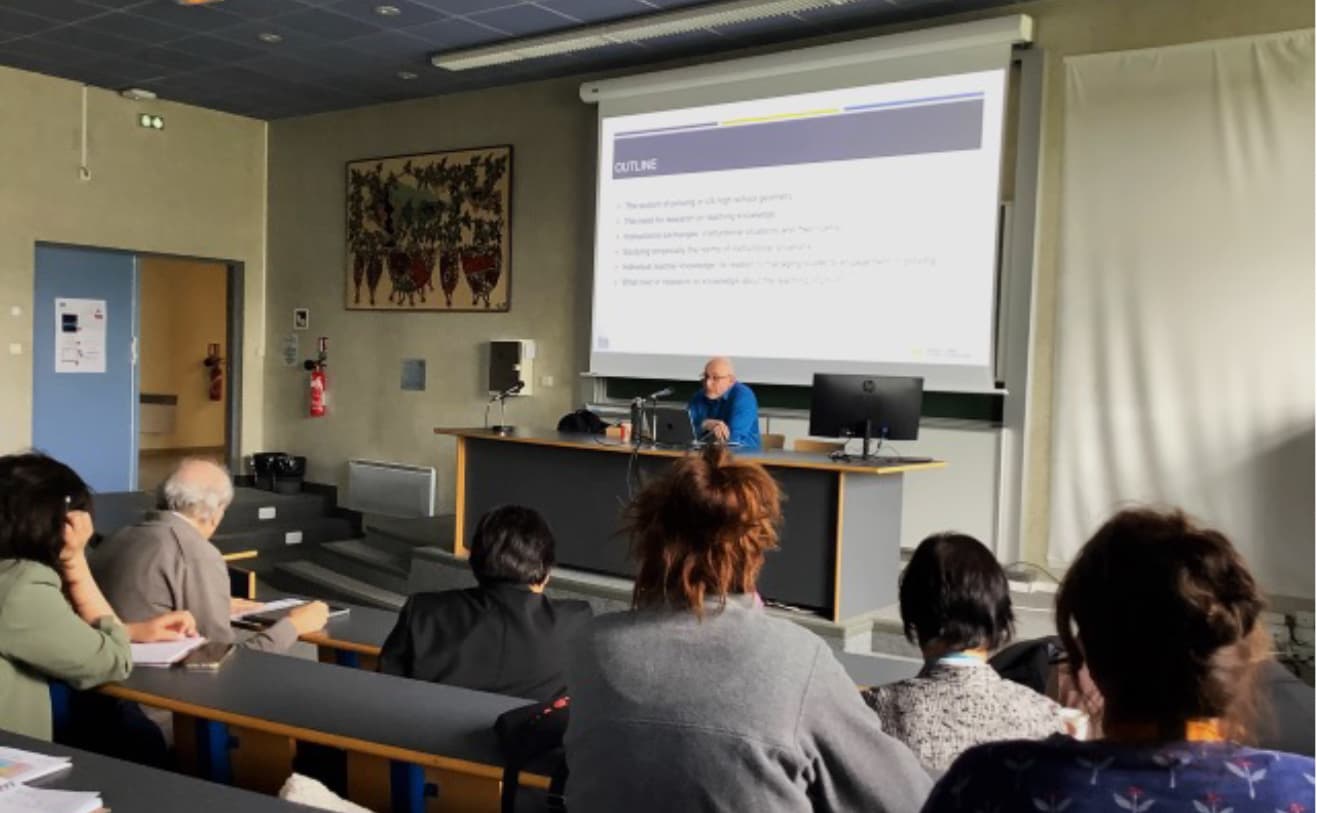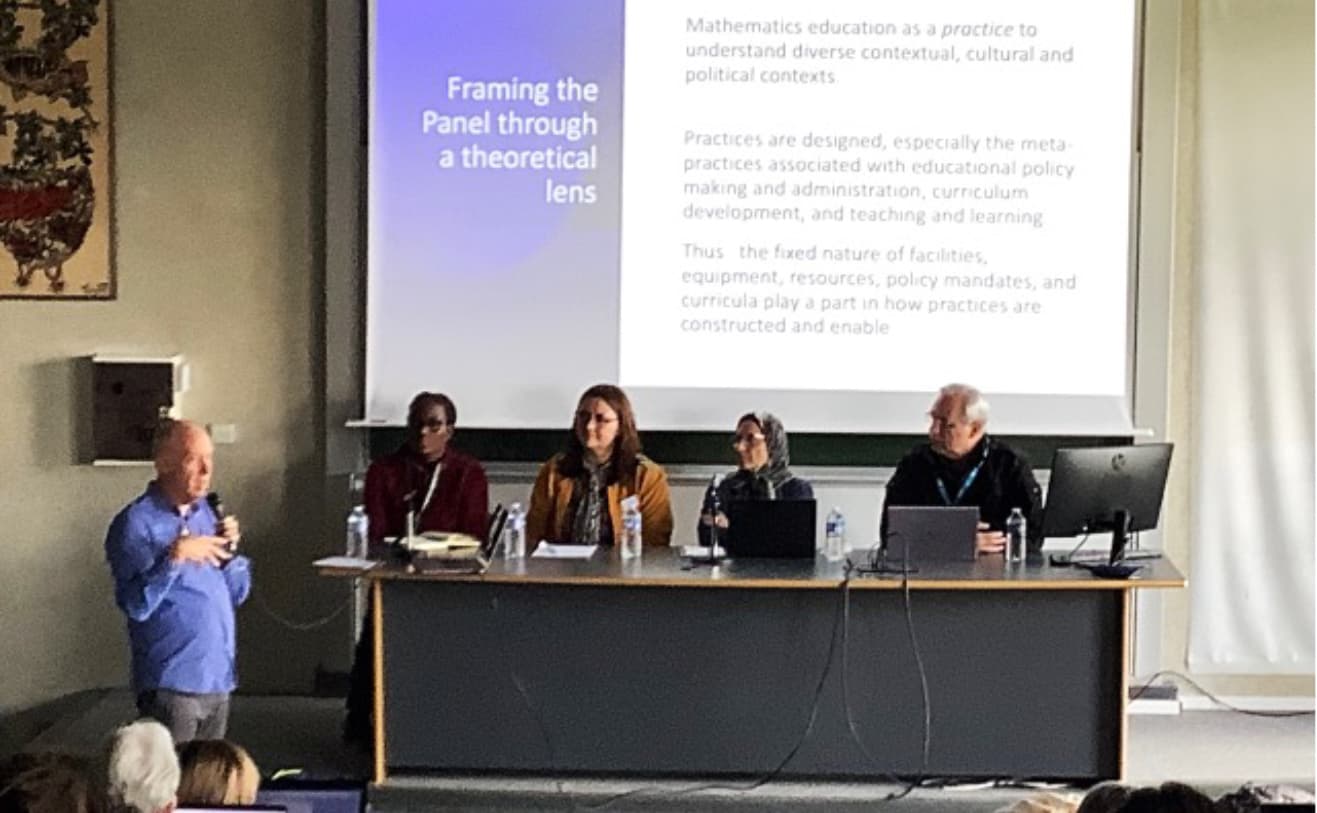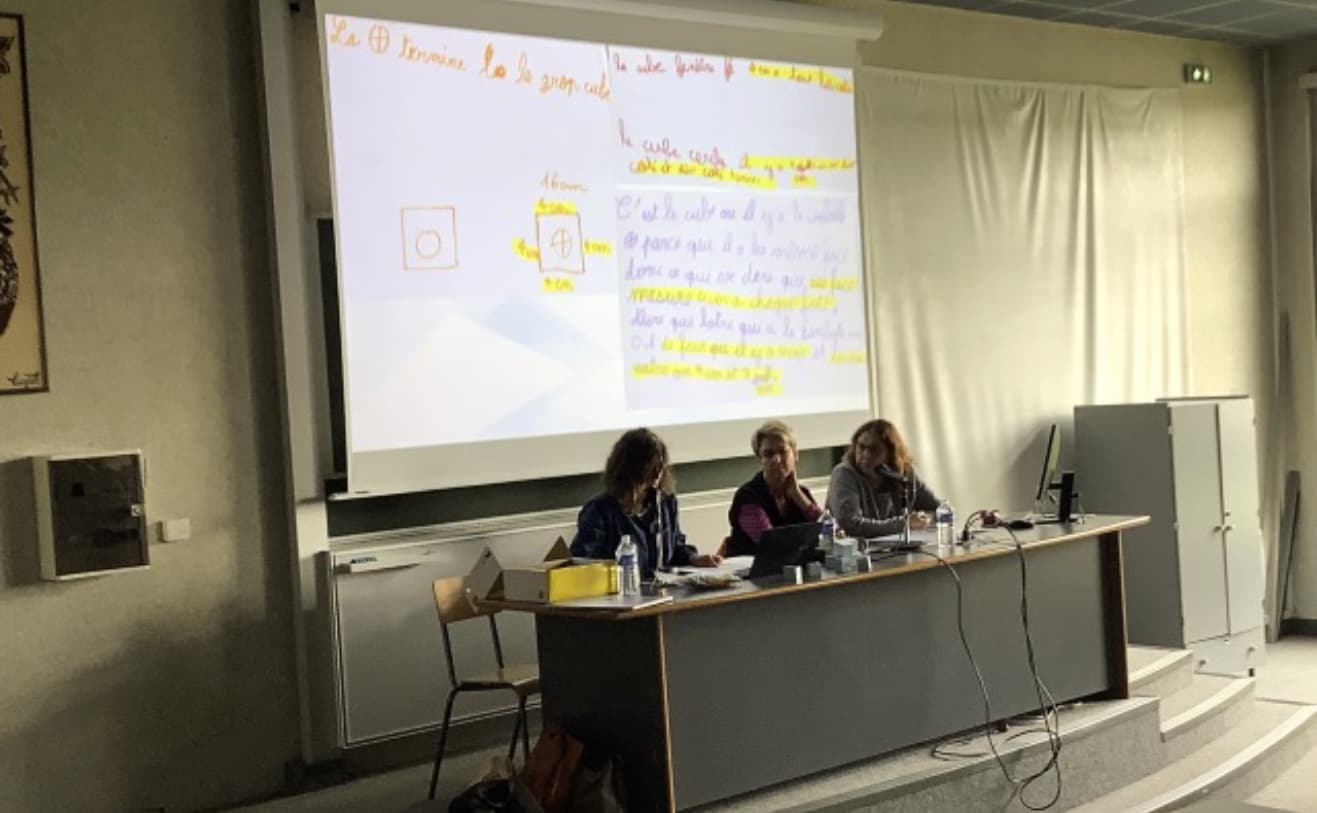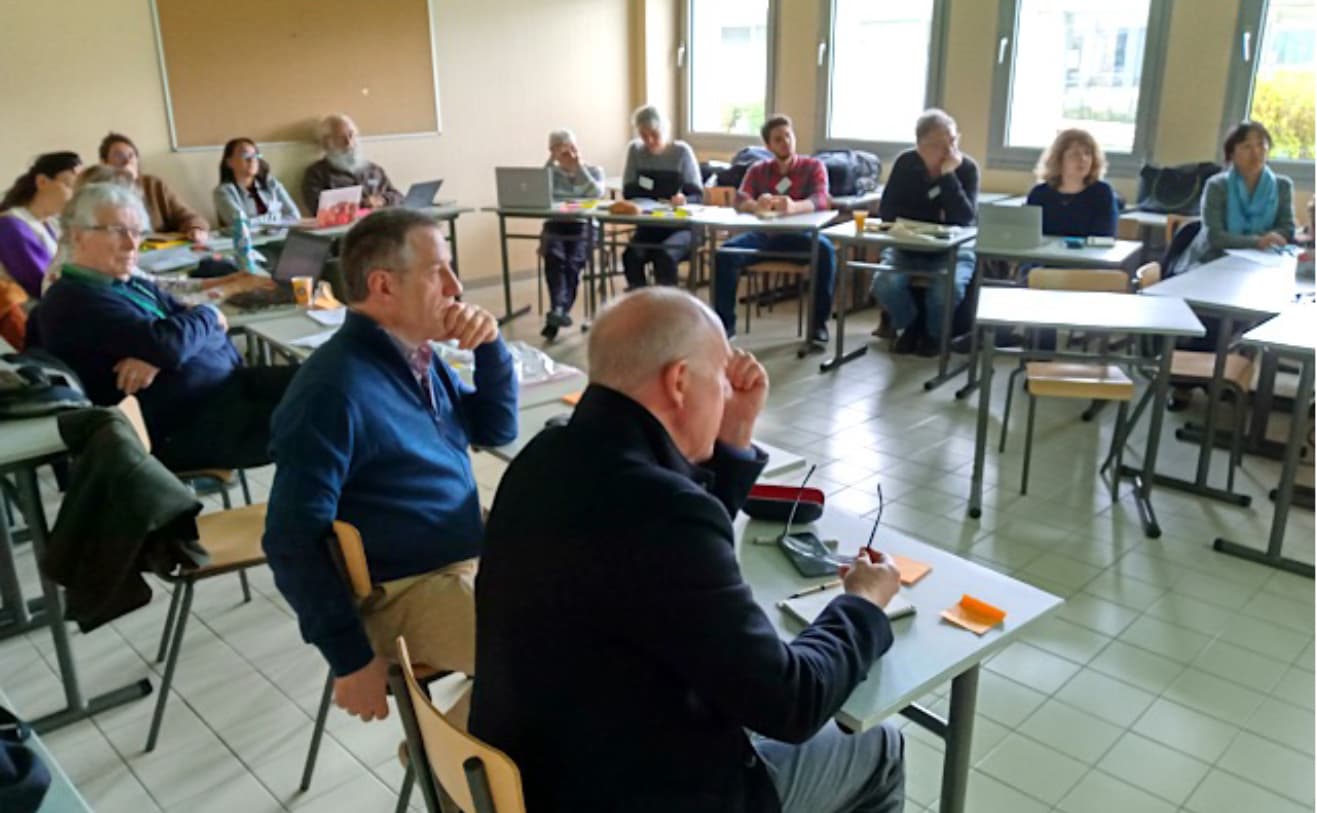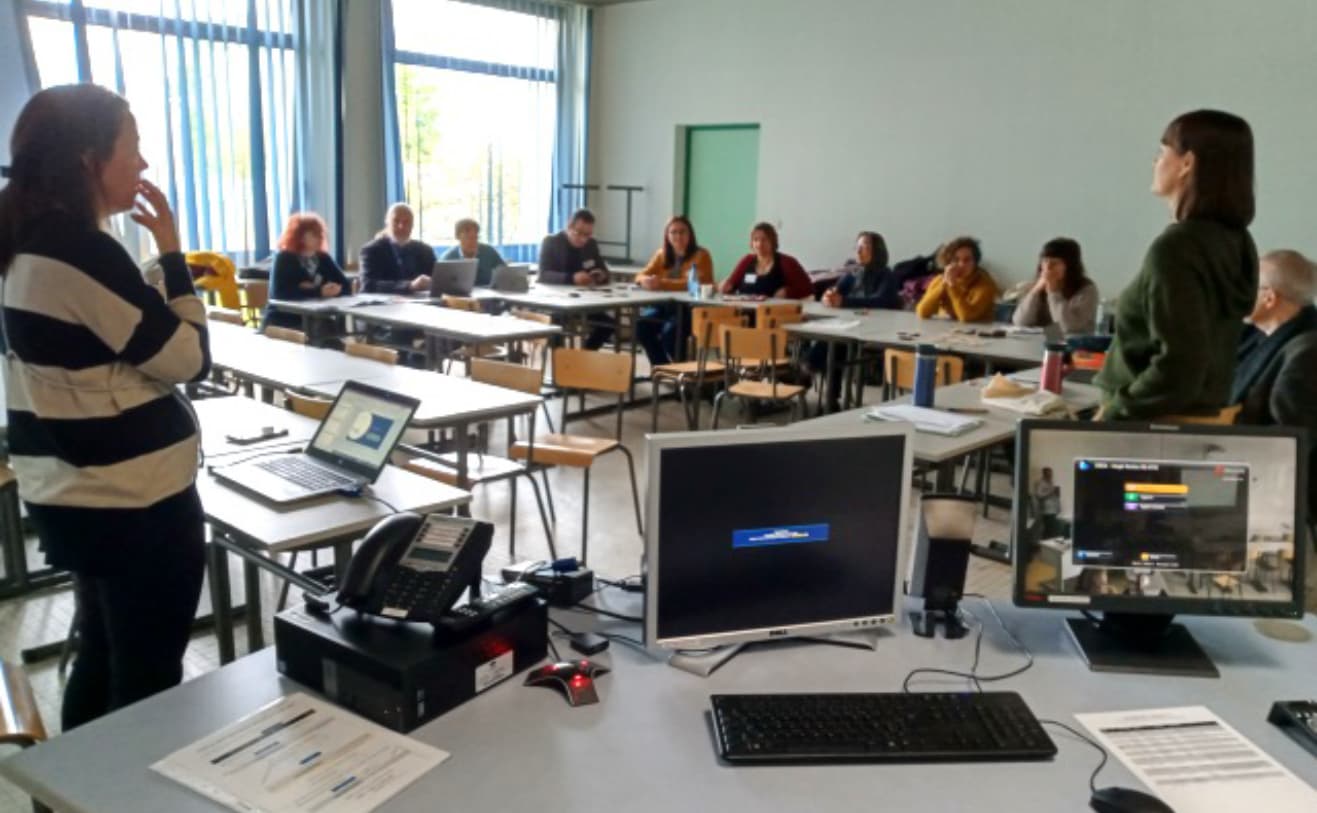The Executive Committee of the International Commission on Mathematical Instruction (ICMI) established the foundations of the 26th ICMI Study in 2022, the topic of the study being Advances in Geometry Education. This is the first ICMI Study to focus on geometry since 1998 (ICMI Study 9, Perspectives on the Teaching of Geometry for the 21st Century); it is aimed at reporting the current state of the field of geometry education, focusing on the advances and current challenges in the teaching and learning of geometry, and proposing guidelines for future research and innovation actions.
Angel Gutiérrez (University of Valencia, Spain) and Thomas Lowrie (University of Canberra, Australia) were appointed as co-chairs of the study by the ICMI Executive Committee. The ICMI president, Frederick Leung (Hong Kong SAR), and the secretary general, Jean-Luc Dorier (Switzerland), oversee the study for the ICMI executive. The International Program Committee (IPC) comprises the two co-chairs, the ICMI president and secretary general (ex-officio members), and representatives from five continents, with a diversity of expertise in different areas of geometry education:
Cathy Bruce (Canada)
Fabien Emprin (France)
Keith Jones (United Kingdom)
Roza Leikin (Israel)
Michela Maschietto (Italy)
Lisnet Mwadzaangati (Malawi)
Oi-Lam Ng (Hong Kong SAR)
Yukari Okamoto (United States)
Milton Rosa (Brazil)
Manuel Santos-Trigo (Mexico)
The IPC met at the University of Valencia in February 2023, with the objective of starting the design of the study. We prepared the Study Discussion Document [1 A. Gutiérrez, T. Lowrie and the IPC, The 26th ICMI Study: Discussion document. ICMI, Berlin, Germany (2024) https://www.mathunion.org/fileadmin/ICMI/ICMI%20studies/ICMI%20Study%2026/ICMI%20Study%2026%20Discussion%20Document.pdf], which was distributed internationally in June 2023, and planned the basis for the organization of the Study Conference, to take place at the Institut National Supérieur du Professorat et de l’Éducation (INSPÉ) of the University of Reims Champagne-Ardenne, in Reims (France) from 23 to 26 April 2024.
The activity of the study is organized around four focused topics, aimed to provide complementary perspectives and approaches to the teaching and learning of geometry. Contributions to the topics were organized around sets of related sub-topics, each sub-topic focusing on a specific issue and stating a set of questions aimed to lead discussions, as defined in the discussion document. The four topics were:
theoretical perspectives,
curricular and methodological approaches,
resources for teaching and learning geometry,
multidisciplinary perspectives.
The Study Discussion Document also served as a call for papers for the Study Conference. These topics and related sub-topics provided the basis for inviting papers. Each submission was reviewed by at least two IPC members, and authors of accepted papers were invited to participate in the Study Conference. Accepted papers were then revised (when necessary) by the authors, before being published in the conference proceedings [2 T. Lowrie, A. Gutiérrez and F. Emprin (eds.), Proceedings of the twenty-sixth ICMI Study: Advances in Geometry Education. ICMI, Berlin, Germany (2024) https://www.mathunion.org/fileadmin/ICMI/ICMI%20studies/ICMI%20Study%2026/Proceedings-ICMI%20Study26.pdf]. The conference proceedings contain 56 papers (see Table 1), with contributions from 127 authors from 28 countries across five continents: Argentina, Australia, Brazil, Canada, Chile, China, Colombia, Costa Rica, Croatia, France, Germany, Greece, India, Iran, Israel, Italy, Japan, Malawi, Mexico, New Zealand, Portugal, Serbia, South Africa, Spain, Sweden, Switzerland, the United Kingdom, and the United States.
| Topics | Number of papers |
| Theoretical perspectives | 12 |
| Curricular and methodological approaches | 17 |
| Resources for teaching and learning geometry | 21 |
| Multidisciplinary perspectives | 6 |
| Total | 56 |
Figure 1 captures participants after the closing ceremony of the Study Conference in Reims.
The map of Figure 2 shows the distribution of contributions according to the first author’s university affiliation.
Paper coverage across the four topics was relatively balanced, including several studies on the role and function of visual tools and spatial reasoning in the development of geometric understanding; the importance of digital tools and manipulatives in teaching and learning; and the influence of cultural traditions and experiences on curriculum design. In addition, the IPC invited two esteemed scholars to present plenary lectures, another five scholars to participate in a plenary panel on geometry practices within diverse cultural settings, and five French practitioners to participate in another plenary panel on innovative methodologies for teaching geometry used in French schools.
How the study was conducted
The participants were welcomed at the Institut National Supérieur du Proféssorat et de l’Education, an institute responsible for initial teacher training in France.
After a few traditional French songs from the “Le Tourdion” choir, guests were welcomed by Christophe Clément, president of the University of Reims, Frederick Leung, president of the International Commission on Mathematical Instruction (ICMI), Frédéric Castel, assistant director of INSPÉ, representing the director of the INSPÉ (French National Institute for Higher Education), Nathalie Wach, director of IREM of Strasbourg, representing ADIREM (Association of Directors of IREMs – Research Institutes for Mathematics Education), Anne-Cécile Mathé, Christophe Clément, and Fabien Emprin, head of the Local Organizing Committee and representing the director of the laboratory CEREP (Centre for Studies and Research on Jobs and Professionalization).
© 2024 Google myMap / Alphabet
The study took place over four days, with eight working sessions, two plenary lectures, two plenary round tables, and an introductory and concluding session led by the two co-chairs.
Contributors were also able to sample local specialities and visit the city of Reims and its famous Champagne houses.
Content of the study
The two plenary lectures were addressed by Nathalie Sinclair (Canada, see Figure 3) and Patricio Herbst (United States, see Figure 4). Sinclair presented results and reflections from her research experience on teaching and learning with technology several curricular geometrical contents in early primary grades. In her lecture, Sinclair linked recent theorising about the role of geometry in contemporary mathematics, considered alternative curriculum approaches that challenge both Western and Piagetian progressions, and discussed pedagogical approaches that centre making and acting. She presented task design principles employed, and theoretical constructs that were used to generate insights into the teaching and learning of geometry. Sinclair also discussed more recent exploratory work involving new digital technologies which is part of her current research projects.
Herbst presented a lecture on teaching knowledge in geometry for the teaching of proof in the United States. Herbst commented on a program of descriptive research that seeks to understand what we call the practical rationality of mathematics teaching and how this rationality can make room for instructional resources and practices that seek to improve instruction. This program has focused on research on the teaching of mathematical proof in geometry, which is one of its core cases for empirical investigation developed over quite many years. The presentation went back and forth between theoretical ideas and specific research and development experiments involving teaching and learning proof and proving geometric contexts.
The plenary panel examining the framing of geometric representations and practices in culturally diverse settings was co-ordinated by Thomas Lowrie (Australia) and included Lisnet Mwadzaangati (Malawi), Natalia Sgreccia (Argentina), Zara Gooya (Iran), and Milton Rosa (Brazil). The panel considered new directions for geometry education research framed within political, cultural, and contextual dimensions of practice (see Figure 5). Mwadzaangati presented the case of the teaching of mathematics and the advances that researchers in mathematics education and mathematics teachers are trying to undertake to improve the quality of education in Malawi. Teachers are urged to move from traditional teaching methods, characterized as “chalk and talk,” to more participative methodologies promoting inquiry-based learning, characterized as “student-centred.” The problem of language of teaching was also raised. Sgreccia provided a snapshot of some characteristics of the Argentinian curriculum in geometry and measurement across primary and secondary contexts. She also provided insights on the challenges of providing rich student learning of geometry, since some topics are avoided due to the teacher’s insufficient content knowledge and school experiences. Finally, Sgreccia commented on the presence of native cultures (Tobas, Guaraníes, etc.) and the possibilities of including their worldviews and conceptions in the teaching of geometry, in connection with nature and about how geometry has been intrinsically present in their practices. Gooya presented an overview of the evolution of geometry education in her country from the 18th century to the present day, characterizing each period in terms of their curricula and textbooks. Rosa focused on the social Landless Worker’s Movement of Brazil, their agrarian culture, and their needs for geometry and measurement knowledge related to sustainability and planification. He informed on the way the traditional method of cubação of land, to measure the area of irregular pieces of land, has been used by the members of that social movement and transmitted orally in communities with very low formal schooling and learning of mathematics. Rosa compared the local traditional knowledge about this method of measuring surfaces to the formal geometric knowledge.
Teachers’ voices were well represented in the second plenary panel of the conference (see Figure 6). Five French practitioners actively involved in collaborative geometry projects focused on different perspectives of their practices of teaching geometry from kindergarten to secondary levels. The panel was co-ordinated by Fabien Emprin and included Isabelle Audra, Mélanie Binet, Marie-Paul Foy, Lucie Jacotin, and Aurélie Marche. Each teacher provided an overview of their school context and their practices that promoted students learning of geometry, while posing questions to the group of researchers. They shared with the audience information about: the social context of their towns, schools, and classrooms; the place of geometry in their classes; examples of geometry activities made in their classrooms (including pictures, videos, sample students’ worksheets, manipulatives, technology, etc.); their teaching methodologies; the ways they care for their pupils with special needs; and problems and difficulties they face while teaching geometry.
The working groups
The conference was organized around five working groups (WG) focused on specific sets of the sub-topics defined in the discussion document, with the intent of having strong synergies among the presentations in each WG. The WGs worked in parallel and were scheduled to meet for eight 90-minute sessions. The first five sessions were mainly devoted to presenting and discussing the papers, with a range of 10 to 14 papers in each WG. In the last three sessions, the participants of each WG engaged in discussions focused on identifying the relevant issues raised in the previous presentations and making proposals to the IPC for the design of a part of a book that will be part of the ICMI Study series, which will be a culmination of the Study (see [3 C. Mammana and V. Villani (eds.), Perspectives on the teaching of geometry for the 21st century: An ICMI Study. Kluwer Academic Publishers – Springer, Dordrecht (1998) ] for the previous Study series book regarding geometry).
WG1 paid attention to theoretical aspects of geometry education related to several main topics in the area: the teaching and learning of proof in geometric contexts (including DGS – dynamic geometry software) in the light of new conceptions and approaches; roles of spatial reasoning in teaching and learning geometry; relationships between visualization and geometry reasoning; and connections between visualization and spatial reasoning.
WG2 (Figure 7) analysed characteristics of geometric thinking across different educational levels, students’ capacities – from those with learning difficulties to mathematically gifted students – and curricula – influenced by local political and cultural characteristics. This group also analysed the knowledge and competencies necessary to teach and learn geometry and the design of learning environments, from several positions like interdisciplinarity, problem solving/posing, contexts influencing the learning of geometry, and different types of tools.
WG3 discussed issues related to pre- and in-service teacher professional training, addressing issues like teachers’ content knowledge of geometry, strategies for teacher training, and types of tasks suitable to be posed to teachers to promote their content and didactical knowledge for teaching geometry.
The participants in WG4 discussed burgeoning issues related to the use of ICT (Information and Communication Technology) in teaching and learning geometry, including: resources available that are useful in the classrooms; characteristics of DGS like dynamism, embodiment, feedback; design of tasks to promote students’ understanding and learning of specific geometric topics; ways of supporting reasoning with technology, like promoting deductive reasoning and proofs, supporting visualization in problem solving, or use of analogy to promote understanding of new constructs; and also constraints and limitations due to the lack of ICT resources in classrooms.
Finally, WG5 (see Figure 8) worked on issues related to the use of manipulatives and visual tools in teaching and learning geometry, in a kind of juxtaposition to the discussions in WG4. They dealt with the concept of resources (physical, digital, tasks, etc.) as a starting point to analyse issues like the specificities of resources for geometry classes, resources for teachers, and kinds of manipulation from kindergarten to university.
Next steps
The IPC is now working on the design of the Study Volume, which will be part of the ICMI Study series. The chapters will cover, in more depth, the content presented, and questions raised in the conference, highlighting a diversity of issues and reflections related to the teaching and learning of geometry at the different educational levels, together with methodological and practical approaches to deal with them. The volume will also provide guidelines for mathematics education research and innovation for the coming decades.
Final reflections
This was a thought-provoking, energizing, and meaningful working group conference. We were able to assemble a cohort of geometry educators from across the world – from diverse backgrounds and experiences – to work harmoniously and positively for a concentrated period. We appreciate that such opportunities, where so many world-leading discipline specialists gather for a common goal, seldom occur in one’s professional life. The distinctness of this Study will be the way in which this cohort has been able to capture the nexus between geometry education theory and practice, across the lifespan (from the early years of learning to advanced multidisciplinary contributions of geometry).
References
- A. Gutiérrez, T. Lowrie and the IPC, The 26th ICMI Study: Discussion document. ICMI, Berlin, Germany (2024) https://www.mathunion.org/fileadmin/ICMI/ICMI%20studies/ICMI%20Study%2026/ICMI%20Study%2026%20Discussion%20Document.pdf
- T. Lowrie, A. Gutiérrez and F. Emprin (eds.), Proceedings of the twenty-sixth ICMI Study: Advances in Geometry Education. ICMI, Berlin, Germany (2024) https://www.mathunion.org/fileadmin/ICMI/ICMI%20studies/ICMI%20Study%2026/Proceedings-ICMI%20Study26.pdf
- C. Mammana and V. Villani (eds.), Perspectives on the teaching of geometry for the 21st century: An ICMI Study. Kluwer Academic Publishers – Springer, Dordrecht (1998)
Cite this article
Thomas Lowrie, Angel Gutiérrez, ICMI Study: Advances in Geometry Education. Eur. Math. Soc. Mag. 134 (2024), pp. 56–60
DOI 10.4171/MAG/208
